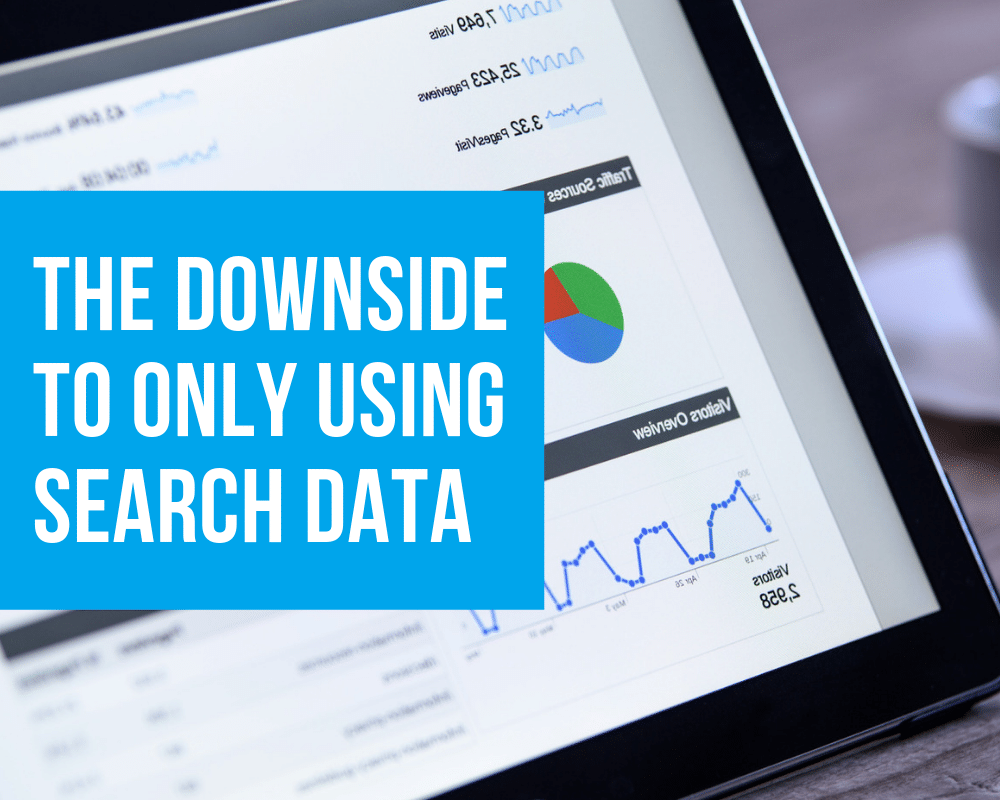When you’re building an email campaign, especially with monetization as a primary goal, relevancy is a major part of the puzzle. Like constructing a building on a solid foundation, email campaigns are only as strong as the supporting structure on which they’re based.
Many publishers turn to search data to understand their audience and improve targeting. What’s popular isn’t always what’s best.
Search data is shocking in its inadequacy, leaving publishers with a shallow idea of who their audience is and buyer personas that range from inaccurate to so basic they’re unusable. Here’s how the search data you know and probably use has been doing you wrong all along.
It Represents Multiple People
Search algorithms are increasingly intelligent yet surprisingly indiscriminate. While Google can tell what users are doing, it has no idea which users are behind those actions. Most multiperson households have at least a few members sharing devices. The whole family may take turns on the desktop in Mom’s office, while the kids often use Dad’s tablet to look up information on Mark Twain for a book report. Even smartphones end up being passed around or used for non-owner-specific tasks, such as someone distracted by driving or a fussy toddler asking their friend to quickly look up restaurant reviews or colic cures.
The typical American household is more connected than ever yet still contains just one desktop or laptop computer and one tablet. While 84 percent of those households have two smartphones, that still leaves many larger families with frequent opportunities to share devices. This begs an important question: Whose data are you analyzing?
Convoluted search data may well be a waste of time. If you’re using aggregate information to target a specific person, you’re creating offers and sending content to a subscriber for whom your email could be completely irrelevant.
It’s Overkill
When you’re collecting targeting data, less is often more, and accuracy is always better than an onslaught of vague tidbits and guesswork. You can’t build a campaign on assumptions. You also can’t create a winning strategy if your foundation is made up of meaningless insights and generalizations. It’s understandably tempting to clutch at every iota of information you have access to in hopes of crafting an Odyssey-level book about each subscriber, but that’s a recipe for disaster.
The catalog of information possible through search encourages you to make mistakes. From attempting to segment your audience into overly tiny groups to creating lists that aren’t even relevant to your brand or product, your zeal for more, more, more is slowly killing your bottom line and sucking your focus away from more important tasks.
The more information you gather, the more there is to analyze. That takes time and money you should be spending pushing relevant content to a carefully selected group of subscribers. Switching from search data to email targeting — or at least using the latter to improve the accuracy and serviceability of the former — pares down subscriber profiles into personas that make sense.
It Lacks Context
Compared to email targeting, search data is practically myopic. While simplicity is a valuable commodity in marketing and monetization, you need enough information to move beyond generalities and into personalization.
Cookie-based data gathered through search and similar sources may net you key demographics such as:
- Gender
- Age
- Marital status
- Geography
- Devices
- Online behavior
Even those details could be murky or missing due to the reasons listed above. People-based data, like the kind collected via email targeting, gathers all the information above and delves in further and adds even more categories.
Where cookie-based data may guess at gender and return a broad age range, people-based data pinpoints the user as a male who’s 29 years of age. Cookie-based data suggests a city; people-based data has a ZIP code, too. Add in a list of brand- and model-specific devices, insight into what our 29-year-old male watches, wears and eats and now you’ve got a vivid picture of who your subscriber really is rather than who you think you’re talking to.
Taking a people-based approach has the added perk of minimizing the risk of assumptions. It’s human nature to see a quick outline that describes a 30-something mom in Omaha and assume she’s into one-pot meals and minivans, but the more complex array of information email data provides can tell us that our mom of three is actually a huge heavy metal fan who can’t get enough Korean barbecue and almost never turns off ESPN.
Finding a data-backed reason to kick stereotypes to the curb is like setting your business free. Instead of dealing in generalities, you’re now able to generate authentic content applicable to the people who have already stepped up and shown an interest in your brand.
Hungry for more engagement and higher revenues? Email monetization helps maximize the potential of your email campaigns, increasing the variety of content, providing accurate tracking, juggling multiple platforms and fueling subscriber engagement, trust, and loyalty. To learn more, contact our team to schedule a demo.

